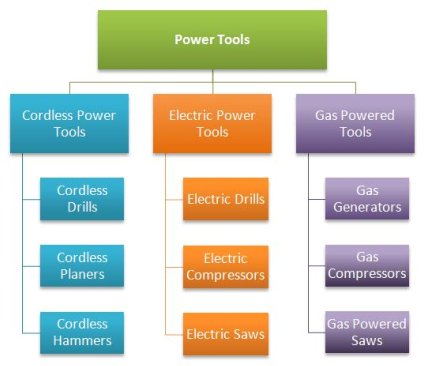Step 12: Siloing – How to Structure Your Website
This step in the SEO tutorial covers an essential strategy, so don’t miss this one! You’re about to learn how to organize your website content in a way that clearly communicates topic relevance to search engines.
Proper internal linking (aka “virtual siloing”) and good site architecture lay the foundation for getting your website ranked for your desired keyword terms and phrases. In this lesson, you’re going to learn siloing — including what it is, why silos are important, and the two approaches to structuring your website into SEO silos. Let’s get started!
What Is Siloing?
In order to rank well in search engines for both broad keywords (e.g., peanut butter) and longer, more specific keyword phrases (e.g., organic crunchy peanut butter), your website must have enough clearly organized supporting content to appear relevant for those terms.
Search engines look closely at your site structure to determine your site’s main topics and whether there is enough keyword-supporting content.

Photo by Eirik Refsdal (CC BY 2.0), modified
Think about how farmers organize their harvests of wheat, barley, oats, and so forth. Farmers care for the integrity of their product by storing each specific type of grain in a separate silo. If wheat, barley and oats were all mixed together, the product would have less value, marketable only as generic “grain.”
Siloing a website means grouping related pages together, either structurally or through linking, to establish the site’s keyword-based themes. Much like farmers use separate silos to store different types of grain, webmasters can silo a website to distinguish its various content themes and make clear to search engines what the site is about.
Siloing your site improves the relevancy of your web pages for your desired search terms. Links are strategically used within theme-focused sections of the site — and PageRank (i.e., linking value) gets passed between closely related pages and landing pages, reinforcing the themes.
Rather than allowing the website to be viewed as a disorganized mixture with no keyword focus, a silo strategy reveals what the site is really about and helps position your website as an expert source for a given topic.
Search engines award the top keyword rankings to sites with clear website structure and subject matter relevancy matching a user query. That doesn’t mean pages filled with exact keyword phrases. Especially in the era of Google’s Panda algorithm, which rewards quality content, you want to build your website around themes based on keywords, not just the keyword phrases themselves. Siloing that themed content is essential to SEO.
Without further ado, here’s the nitty-gritty of siloing.
What Is Physical Siloing?
There are two ways to silo a website — physical siloing through the directory structure and virtual siloing through the linking structure. Let’s discuss physical siloing first.
The URL address of a web page can give users and bots important clues about the page. For instance, the URL below reveals that the page focuses on some kind of cordless, hammer, power tool by Makita:
http://www.seriouspowertools.com/cordless/hammers/makita-bhp123.htm
When you use the physical URL directory structure of a website like a filing cabinet to organize related pages, you are creating physical silos. Each theme of the site has a group of pages saved together under one folder dedicated to that specific category (e.g., “cordless”), and within that category are subfolders for the different subcategories (e.g., “hammers”). Each file has its place in a distinct category, with no two files ever getting filed into both categories, only one or the other. (SEO Tip: You don’t want the same page contents to be indexed under more than one URL.)
To have a physical silo structure, create a directory structure that aligns with the various themes covered within your website.
What Is Virtual Siloing?
Virtual siloing involves using the internal link structure of a site (i.e., how pages link to other pages) to:
- Connect groups of related pages together.
- Separate unrelated pages.
- Strengthen the primary landing pages of each silo.
While physical siloing requires theme-related pages to be located within the same directory of a site, a virtual silo is formed by hypertext links between theme-related pages. In fact, connecting related pages virtually through text links can be effective even in the absence of physical silos, because the search engine spiders crawl a site’s contents by following its links. Virtual siloing is powerful.
By linking between pages that are tightly related in topic and theme, you are consolidating that theme-relevance to a section of your site. A site hierarchy, with top-level landing pages and support pages for each SEO silo, emerges based on linking patterns alone.
For example, rather than interlinking between all of the pages haphazardly, our example power tools website could use virtual siloing to show that it has three distinct, keyword-relevant content themes for cordless, electric, and gas-powered tools:

Support pages always link up to their silo landing page (indicated by the lines connecting all the blue pages together, for instance). Cross-links between silos should be avoided except to silo top landing pages (indicated by the larger rectangles in the example diagrams). Since random links between silos would weaken the theming, no subpage within a silo should link to a subpage in another silo. The diagram below shows appropriate and inappropriate internal linking for a siloed website:

Careful linking within your site shows the relationships between pages and reveals your website’s topic structure. It also strengthens your main landing pages, which are the ones you want to show up in search results. Virtual siloing leads to the accumulation of PageRank on the top-level landing page of each silo, which becomes the most relevant page on your site for keywords related to that theme. This is how siloing leads to better search engine rankings.
We recommend using the virtual silo approach, reinforced by the physical silo approach when possible, for maximum effectiveness.

How to Silo Your Website
The process of siloing a website by topic can be briefly described in four steps:
- Determine the overarching themes for your website. What content do you have (and plan to have), and what is it about? We recommend you consider your themes in conjunction with keyword research. (See Step 1 for more on keyword research.)
- Choose your siloing strategy. Decide how to implement a website structure that clearly identifies the themes of your website: physical siloing and virtual siloing, or virtual siloing alone.
- Plan your linking structure. Examine your link structure (starting from your main navigation menu) and decide how best to connect pages together to reinforce your themes according to the way people search for your content. Keep in mind that you’ll generally need at least five supporting content pages to establish a silo theme.
- Implement and build your silos. Publish high-quality content that includes your targeted keyword phrases for each theme-based silo. Trim and/or create links to connect supporting pages within each silo and reinforce your top-level silo landing pages.
Whew, this was an important lesson. We hope you are seeing your website with new eyes. With website structure in mind, you can better determine whether search engine spiders see your content themes clearly or just crawl around your site confused.
What’s next in the SEO tutorial? External linking! In the next lesson, we’ll give you SEO tips on how to attract the right sort of inbound links to your website and prune the harmful links that can damage your site’s rankings.
TIP: Many people have questions about how best to silo a particular website. If you need face-to-face help, why not attend one of our SEOToolSet Training classes? For much less than you might pay for consulting services, you can learn SEO, ask questions — directly to Bruce or an SEO trainer — and get answers in person! See our upcoming SEO training dates and locations for details.
Need more SEO tips?
See more on How to Silo a Website or Search Engine Optimization
Related blog posts and articles:
The Competition-Busting SEO Strategy No One Is Talking About: Siloing Your Site
Siloing – How to Theme a Website for Clear Subject Relevance
Why Siloing Remains Important
Theming through Siloing


